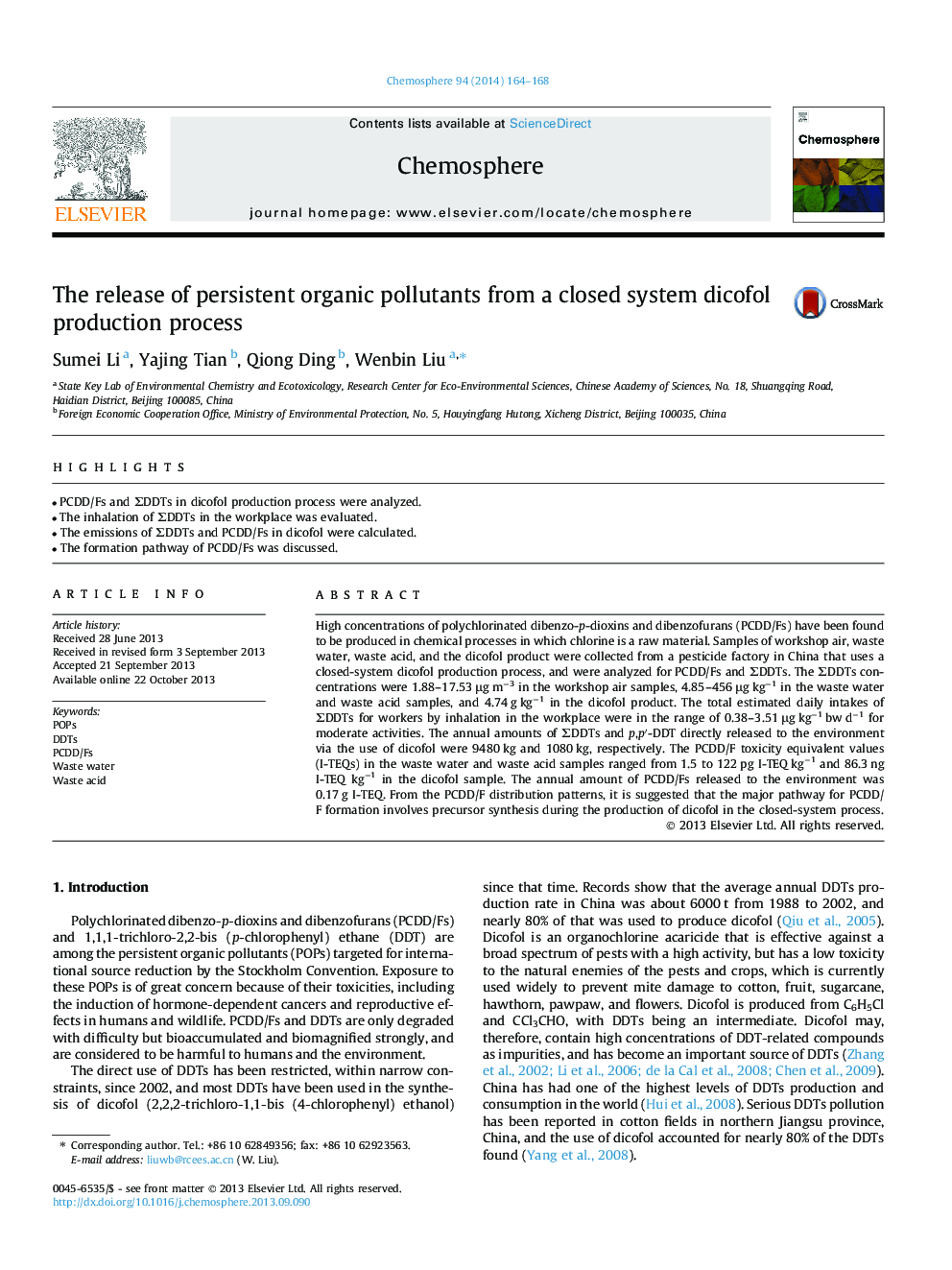| Article ID | Journal | Published Year | Pages | File Type |
|---|---|---|---|---|
| 6309978 | Chemosphere | 2014 | 5 Pages |
Abstract
High concentrations of polychlorinated dibenzo-p-dioxins and dibenzofurans (PCDD/Fs) have been found to be produced in chemical processes in which chlorine is a raw material. Samples of workshop air, waste water, waste acid, and the dicofol product were collected from a pesticide factory in China that uses a closed-system dicofol production process, and were analyzed for PCDD/Fs and ΣDDTs. The ΣDDTs concentrations were 1.88-17.53 μg mâ3 in the workshop air samples, 4.85-456 μg kgâ1 in the waste water and waste acid samples, and 4.74 g kgâ1 in the dicofol product. The total estimated daily intakes of ΣDDTs for workers by inhalation in the workplace were in the range of 0.38-3.51 μg kgâ1 bw dâ1 for moderate activities. The annual amounts of ΣDDTs and p,pâ²-DDT directly released to the environment via the use of dicofol were 9480 kg and 1080 kg, respectively. The PCDD/F toxicity equivalent values (I-TEQs) in the waste water and waste acid samples ranged from 1.5 to 122 pg I-TEQ kgâ1 and 86.3 ng I-TEQ kgâ1 in the dicofol sample. The annual amount of PCDD/Fs released to the environment was 0.17 g I-TEQ. From the PCDD/F distribution patterns, it is suggested that the major pathway for PCDD/F formation involves precursor synthesis during the production of dicofol in the closed-system process.
Keywords
Related Topics
Life Sciences
Environmental Science
Environmental Chemistry
Authors
Sumei Li, Yajing Tian, Qiong Ding, Wenbin Liu,
